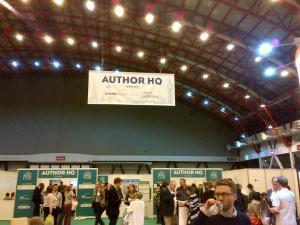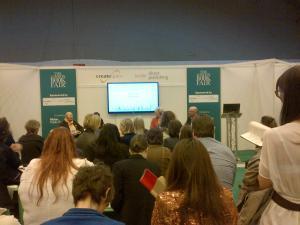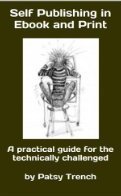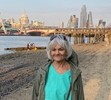Patsy Trench's Blog, page 12
April 10, 2014
The London Book Fair
I was more or less warned off going to the London Book Fair by other writers who said ‘It’s really not for authors’, but I went along anyway on the offchance.
Entering the massive space of the Earls Court Exhibition Centre is daunting. You feel as if you’re in the cosmetics section of the biggest department store in the world. You stroll past the glossy stands of Chanel, Estee Launder and Clinique (Harper Collins, Hachette and Bloomsbury), and the cheap-and-cheerful counters of Bourjois, Olay and Max Factor (the smaller publishing businesses) and on through the digital solutions bit, and there tucked away right at the back is the Author HQ. Here you can attend back-to-back seminars, mostly but not entirely about self publishing, many of which bore little or no relation to the schedule I had painstakingly downloaded from the LBF website.
Thus I found myself this afternoon accidentally sitting in on part of a seminar called ‘The Write Stuff’, where brave authors can pitch their books to a panel of writers’ agents. They have two minutes for their pitch and the agents have two minutes to comment. As expected, the ones with the brilliant sales strategies weren’t necessarily the ones with the best product, and vice versa, which only goes to confirm my concern that in the self publishing world it’s not your writing that matters so much as your marketing skills.
On the Tuesday I bumped into Becky Swift from The Literary Consultancy who told me they have developed relationships with Amazon, Kobo, Nook and the rest, all of whom are looking to them for product that has the TLC stamp of approval (which is not easy to get), which means they are acting as a kind of useful filter.
Upstairs in the rarified virtually author-free zone of the IRC (International Rights Centre), where I was stopped at the gate and quizzed about my intentions and only let through when I said I was visiting an agent friend and promised not to misbehave, agents sit in rows of stalls doing deals with publishers. News from there was gloomy – in an uncertain market the larger publishing houses are increasingly reluctant to take on new and untried writers (nothing new there). Which means of course it makes even more sense to self publish. As one (self published) speaker said earlier, ‘Why wait months for an agent to turn you down and several more for publishers to do the same when you can submit your book now?’
Alternatives to Amazon
I’ve already blogged about Smashwords, which distributes ebooks to all outlets, including Amazon, but I also wanted to check out alternatives to Amazon’s CreateSpace, their print-on-demand ‘arm’. I’ve published through CreateSpace and found it miraculously easy, efficient, quick and free (to upload). But if you want to avoid Amazon there is a company called printondemand-worldwide.com. As far as I can tell they print and distribute your book, just like CreateSpace, only they have outlets in the UK, thereby in theory reducing shipping costs. I haven’t investigated them properly yet but it looks as if, unlike Amazon, they have startup costs. They handed me a couple of impressive-looking brochures so if you’re thinking of publishing something where quality and colour are paramount, they may be worth checking out.
Or there’s Ingram, which I knew as LightningSource, which I looked at when I was publishing my Australian book as they have an outlet in Australia (as well as here in the UK). The lady at the counter however, who was in charge of ‘transportation’, told me postal costs within Australia are so high it’s cheaper for Aussies to buy from the US, which is rather astounding. Again they have startup costs (I believe), but if you are expecting to sell a lot of books in the UK they may be worth checking out at ingramspark.com.
~~~
Other interesting things I learned:
children are really into ebooks (perhaps not surprisingly).
the best selling book in the Australian charts is The Book Thief, written by the Sydney-born writer Markus Zusak. (Good to see the Aussies celebrating their own.)
the Guardian is introducing a prize for self published authors.
Was it worth going? Absolutely, if only as an excuse to get out there and connect with other writers and anyone connected to the writing and publishing business. Which as indie authors we have to do!


April 8, 2014
Introducing Mark Coker

Mark Coker with Alison Baverstock, who introduced the lecture: (writersandartists.co.uk)
Smashwords distributes ebooks written by indie writers to all outlets, including the Apple store, Barnes & Noble and Amazon etc, for all e-readers including Kobo, Nook, Kindle, and every other device known to man. Smashwords was born out of Coker’s own failed attempt to find a publisher for a book he and his wife wrote back in 2004, despite the backing of a major agent.
Coker is evangelical about self publishing, needless to say. Much of what he told us would be well known to anyone who has published through Smashwords, but it was interesting to hear some hard facts and to get his take on the publishing business as a whole.
Coming from Silicon Valley where, to quote Coker, ‘technology solves everything’, he nonetheless has the ability to explain things in a virtually jargon-free manner. Echoing my own comments on this very site he reiterated that it is not just possible but easy to publish a book with no specific technical skill and with no other software than Word. Here are some of his facts:
Smashwords has gone from publishing 140 books in 2008, when it was founded, to 267,000 in 2013.
In the US ebooks comprise 35% of all book sales in terms of dollars. Since ebooks are invariably cheaper than print books this represents something like 50% of all sales in terms of ‘units’, or books.
Coker’s prediction is that in three years more than half of ebook bestsellers will be self published. He also predicts that in the not too distant future more writers will want to self publish than traditionally publish.
Self published authors make 60%-80% of the list price of their ebook, compared with 12-17% if traditionally published. {Amazon/Kindle indie writers make 70% or 35%, depending on territory.) All e-retailers will accept ebooks by indie writers.
A case study on the importance of book covers, from Apple: the book in question, a romance, was first submitted with a plain cover with the title and author typed on the front. It sold nothing. It was then resubmitted with a new cover, again with a plain two-colour background, with just the title and author name. (I actually thought this looked rather stylish.) Sales remained negligible. The book was submitted yet again with a third new cover, this time featuring a scantily dressed male with his hand down the unbuttoned jeans of a scantily dressed female. Sales went from virtually nothing to 200 a day. Seeing the spike, Apple picked it up and promoted the book and sales went to nearly 2000 a day and hit the New York Times best seller list.
Moral: better to be appropriate than tasteful. ‘Great covers make a promise,’ says Coker.
More interesting facts: free books produce 90 times more downloads than any other. (Whether or not those downloaders actually read the books is another matter.) It is a good strategy for instance if you are producing a series of books to discount the first book to zero in order to attract readers to the second book. If like me you baulk at the idea of anything you produce being given away for free, this kind of strategy makes sense in order to build your readership over a period of time.
Romance writers lead the field, not just in sales but in innovation.
Smashwords’ best selling author is a New Zealander writing about New Zealand in World War 1, who turned to self publishing when publishers told her ‘no one is interested in stories set in New Zealand’.
Coker then outlined his ’16 Best Practices’ for self publishing, some of which are obvious, as in ‘Write a great book’ and then ‘Write another great book’. Produce a great cover. Know your target market. Give books away for free. Unlike with traditional print publishing sales can and very often do start small and grow. (One book spiked when it got a mention in the Wall Street Journal). Maximise availability (ie don’t use Kindle Select, but then he would say that..). Build a platform through social media. At the end of each book include links to your Facebook and Twitter accounts and to your blog and/or website.
Pricing strategy: selling at $1.99 is a ‘black hole’ apparently. The optimum price for sales of ebooks is $3-$3.99. (This is for fiction.)
Pre-orders is the most significant selling tool of all. This is where customers order a book ahead of publication and the orders are credited on the day the book is published, thus creating enough sales in one go to hoist the book into the bestseller list. This presupposes you have been publicising the book over a period of at least four weeks to create sufficient interest and excitement, which means marketing it every day in the pre-order period. To submit as a pre-order go to smashwords.com/pre-order. This strategy, which Coker called ‘cheating’, will only work for so long, until the time when everyone is doing it and so negating its usefulness.
Positivity and partnerships. Develop relationships with fellow authors. Share secrets. Look for other people writing in similar genres, collaborate on short story anthologies (these don’t sell so well but they have other uses, about which I will be blogging in the near future), or box sets of full-length books. Share promotions.
Think globally: in 2013 over 40% of Apple ebook sales were outside the US. Australia was the next biggest market followed by the UK and Canada.
Don’t borrow money (!) because you will not make it back. You are running a business and like all businesses it will take time to make a profit, if it ever does. Keep expenditure to a minimum and don’t pay other people to do things you can do yourself. When and if you start to make a profit, put it back into your business. Ebooks are immortal, they never go out of print. Think of your income as an annuity.
Longer books sell more. For some reason books over 100,000 words sell more than those of 80,000 or so.
I should end by saying Coker did make a point throughout the lecture that the most important thing of all is to write the best book you are capable of writing, and then rewrite it. Edit, revise, edit, revise. I’d like to add to that, if you can, have your book assessed professionally (I recommend The Literary Consultancy, who are currently scrutinising my latest oeuvre).
Smashwords have produced several books on how to convert and market your manuscript, including the Smashwords Style Guide. They can also be found on youtube.com/user/Smashwords.


April 4, 2014
Linda Acaster

Linda Acaster
Linda is an established author with experience of both traditional and self publishing. Her latest novel, The Bull At The Gate, Book 2 in the Torc of Moonlight trilogy, was recently launched as an ebook, with a print version to follow. She writes complex Contemporary Fantasy based on British history and myths.
I asked Linda a few questions about her self publishing experience and in particular how she goes about marketing her books.
P: Why did you decide to go indie?
L: The mainstream publishing industry decided to kick my work into touch. I was writing historical romances at the time and the publisher wanted less history and more beating- heart romance in their historicals. My writing was evolving – as any writer’s should – and I’d found a publisher for a mediaeval fantasy I’d written just to see if I could. As Fate decreed, between being made the offer and accepting it the publisher appointed a new editor for the line who was determined to ‘sweep clean’. I found myself out with the debris. Later I thought I’d found a small press interested for another book, but after a glitch it soon became apparent that I knew as much as they did. Amazon was just opening its digital doors and so I stepped through as an indie author, something I’ve never regretted.
P: How does it compare in your experience with being traditionally published?
L: Wonderfully. I’m in control, which makes me sound like an anorak, but I put a lot of effort into both my writing and the historical detail I use, and twice having anachronistic covers foisted on my books made me wary. Now (nearly) all the decisions are mine to stand or fall by. Do I make a living selling books as an indie author? No, but I never did as a mainstream published author, either. Very few do.

Book one in the trilogy
P: You are very active on social media. How important is it for indie writers to have a blog and a presence on Facebook and Twitter, in your view?
L: Very – end of reply. But don’t think this is down to only indie authors; mainstream published authors have to do exactly the same. Not until you are a big name in its list will a publishing house spend time and effort on an author’s behalf – usually if a substantial advance has been paid and the publisher is desperate to recoup that plus a profit.
A blog (or website) is the hub where the author stores information: about themselves, their writing, their research, their books, where to buy said books, and anything related. A written blogpost needs to be advertised, which is where Facebook, Twitter, LinkedIn, Goodreads, etc, come in. These provide a tease and a link back to the blogpost where, prominently (ie above the “fold”, on the part of the screen immediately viewable), will be a picture of the author’s book cover/s. Think of a blog as a glossy magazine on a newsstand. The magazine does not exist to elucidate its readers, it exists as a platform for advertising. But who willingly buys a glossy magazine full of adverts? It is the articles that draw the reader in, the advertising set close by these that the reader glimpses, then reads, and hopefully acts upon. Interacting directly with strangers on Facebook or Twitter is akin to a cheery smile on a sullen day. People automatically smile back, become interested, follow links. No one said this is easy, or quick, but each time it’s done an author is getting his/her name out into the world.
P: You’ve done a good deal of guest blogging. How do you find the blogs to write posts on, and how useful do you think it is in terms of selling your books?
L: If a mainstream print author has a new book coming out that author will often organise talks and/or signings in conjunction with a bookshop or community group. They may sell two copies, they may sell twenty, they may sell none, but they will go armed with advertising – postcards (see such as http://www.vistaprint.com) – to give to people they chat to. Finding blogs to host a guest-post works the same way. If you are active on Twitter and Facebook ask on there. I also belong to six writer/reader Yahoogroups and I ask on there. The idea is to piggy-back on the blog-owner’s followers, but again, interaction is the key. Support the post, by Tweeting/Facebook-ing it, answering comments promptly, being cheery. Does it sell books? Ask BMW how often its TV adverts sell its cars, and think how often you see those advertisements. Marketing is a drip-feed process across multiple platforms.

Book two
P: I believe you try out your books in the early stages with the help of ‘beta readers’. Can you explain what these are, and how you go about finding them?
L: I belong to a writers’ group. We don’t write at our weekly meetings, we read aloud work-in-progress for constructive criticism. Those fellow writers are, in effect, acting as beta readers for each other. We are a small group of published authors so we know our stuff and don’t pull our punches, highlighting anything from poor grammar to clumsy sentence construction to staid characterisation. Nit-picking is applauded. When a book is finished and polished, we may offer the full script for whoever has the time to go through the entire work, usually digitally employing Word’s comments facility. I know of authors who find beta readers online – via Facebook, Twitter, Yahoogroups (note the trend here). If you write in a recognised genre then chances are you will find another writer willing to exchange beta-reading duties. The trick is to find someone on your wave-length with a good skills set.
P: Apart from social media do you have any other recommendations for marketing for indie writers? Especially those who aren’t familiar with social networking, or whose target readership aren’t likely to be familiar with it?
L: Few writers who didn’t grow up with social media automatically embrace its potential. I didn’t. It is a learned, and learnable, craft. If your target readership isn’t likely to use social media, then I would suggest your priority product should be paper-based, with digital ebook as a back-up. That means gaining speaking engagements with community groups, occasionally with willing bookshops. Hand-selling is still hand-selling, be it on the internet or in person, and it is the only way to sell books, fiction or non-fiction. Have a good product, and don’t give up.
~~~
You can buy Linda’s books here:
The Bull At The Gate: http://getbook.at/BullatGate
Torc of Moonlight: http://getbook.at/TorcOfMoonlight
Give Linda a wave via:
Blog: http://www.lindaacaster.com
Facebook: https://www.facebook.com/lindaacasterUK
Twitter: https://twitter.com/LindaAcaster
Patsy Trench
London, April 2014


April 3, 2014
The Royal Australian Historical Society
Thank you to the Royal Australian Historical Society for their generous grant towards the writing of the sequel to Worst Country. This one will be about my great grandfather GM Pitt, Mary Pitt’s grandson, pioneer farmer in the Moree district of NSW, mayor of East St Leonards and founder of the iconic stock and station agent Pitt, Son & Badgery. Tentative working title GM Pitt: Great Grandfather of New South Wales, if that’s not too presumptuous.

George Matcham (GM) Pitt
With a bit of luck I shall be travelling back to my second home to start serious work on the project in the autumn (that’s the antipodean spring). Hoorah.
Meanwhile if anyone reading this has any information about GM, or about Pitt, Son & Badgery, I’d be very grateful to hear about it.
Patsy Trench
London, April 2013


March 18, 2014
Writing family history
Over the next few weeks I am going to be blogging about writing family history. The focus will not be on the nuts and bolts of Births Marriages and Deaths so much as suggestions of ways to make your story appeal to a wider readership beyond your immediate family.
The posts will be based on my own experience writing about my Australian ancestress in a book that was eventually named The Worst Country in the World. My methods are obviously not definitive but they might just spark off some ideas in your own mind about how to approach writing about your own family.
It is my humble opinion that family history, writing about ordinary (or extraordinary) people doing quite ordinary things in specific places at specific times, plays a vital part in the recording of social history. Where else can you read about the day to day lives of everyday people? It is for this reason that I would like to encourage family historians to look for ways to broaden their intended readership.
Each blog will have a subject, the first being ‘Why do you want to write about your family history?’ If the answer is simply to record the wheres, whens and whats of your ancestors then this blog probably isn’t for you. If it’s something wider than that then hopefully by explaining my own reasons for spending six years (yes!) researching and writing my book I may help you to find ways to approach your own story. That anyway is the intention.

The typical family portrait (Australia c1920)
~~~
Why do you want to write about your family history?
I first heard about the subject of my book, my four x great grandmother Mary Pitt, from my aunt in Australia, who was the family genealogist. She’d spent years researching Mary’s background, mostly in England, from where she emigrated to New South Wales in 1801. I didn’t pay the story a great deal of attention to be honest, not until I did a bit of my own research into Australian colonial history and realised the significance of the date.
In 1801 the newly founded colony of New South Wales, otherwise known as Botany Bay, was thirteen years old. It had been founded in 1788 as a penal colony, a place to send convicts who could no longer be transported to the newly independent United States, and who were filling up the prisons and hulks to such an alarming extent that the government of the day had to find an instant solution to the problem of overcrowding. So the First Fleet set off in 1788 to a country that had only been visited, briefly, by Captain Cook eighteen years earlier and ever since pretty well ignored. On board the eleven ships were 775 convicts and 245 marines, some with their families, plus the ships’ crews and officials – a total, on arrival, of around 1,370. They set up camp on the east coast by a harbour at a place which they named Sydney, and then proceeded to nearly starve to death.
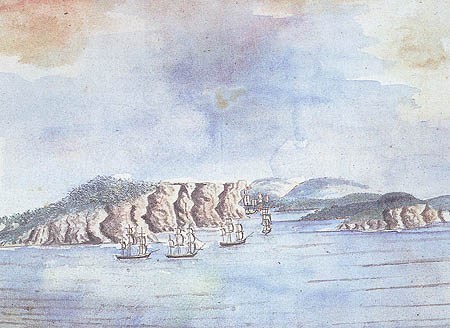
The First Fleet arriving in Sydney Harbour, by William Bradley 1788 (australianhistory.org)
Thirteen years later the colony was still an experiment that looked as if it might fail. The Europeans, as the colonists were called, found the climate and the conditions so alien they struggled to grow enough to feed themselves, and provisions from England, for the first few years anyway, were very scarce. Not surprisingly very few people could be persuaded to migrate there voluntarily, especially since it involved a hazardous sea journey taking at least six months, with little prospect of being able to return home if they didn’t like it there.
One of the very few exceptions was my four x great grandmother. Moreover she was a widow, in her fifties, and she had five children with her – four girls and one boy – whose ages ranged from fourteen to twenty-seven. What on earth made her decide to leave her home in the village of Fiddleford in Dorset and travel across the globe to live in a penal colony?
That, dear readers, is what made me decide to write the family book.

Sydney Harbour c1800 by Conrad Martens (artrecord.com)
If you have a Why or a How or a What in your family background that begs to be answered, that may well be the jumping-off point for your journey into print.
Next time: What sort of a book are you writing?


February 20, 2014
Self publishing for the technically challenged
… is the name of my new website. Please check it out at www.selfpublishingforthetechnicallychallenged.com. It is dedicated to the modern art of self publishing and is aimed at all writers who are contemplating going down that road but are not sure how to go about it. It contains full instructions on how to convert a manuscript into an ebook and a paperback, details of practical workshops I am in the throes of setting up, and in time, recommendations of cover designers, editors, proofreaders and so forth.
It is also intended as a forum for information and discussion on any aspect of self publishing, including and especially the thorny business of marketing.

Sketch by Anna de Polnay
See you there!
Patsy Trench, London, February 2014


December 20, 2013
Amazon (again)
I don’t mean to be blogging about Amazon twice running, but in the run-up to Christmas, and having just spent a wearisome few hours trawling the bookshops of central London in search of a recently published and well reviewed book by a famous person (Nic Roeg, actually), and coming away empty-handed and slightly peed off, once again I have to admit to being outlandishly grateful to Amazon.
A short while ago The Author, the quarterly journal of the Society of Authors here in the UK, asked members for their opinions on Amazon, and the results, in a piece titled What do we think about Amazon? (by James McConnachie) in the latest edition, make very interesting reading. On the anti side Amazon has been held single-handedly responsible for the demise of bookshops (see above), and, now that anyone can write and publish their own work, and review other people’s, for lowering the status of the book industry in general to the level of amateurism.

The Author, editor James McConnachie
But as far writers are concerned they seem to have little but praise for this dastardly organisation, not just because they make it possible for any writer to publish his or her work, and earn up to 70% royalties (for ebooks), but for the simplicity and transparency – and efficiency – of their accounting system. Most interesting are the comments from writers who’ve previously been traditionally published, saying how much better treated they feel working with Amazon, and how being able to check their up-to-the-minute sales figures and not being forced to sign complex contracts, or churn out books to a ridiculous deadline, makes them feel that much more in control of their own careers.
For me, as both a writer and a user, I’d like to add to the list the efficiency of their delivery and payment system, which extends also to other Amazon outlets such as Lovefilm (which I am addicted to). The downside obviously, apart from the tax avoidance – European Amazon being based in Luxembourg and therefore subject to only 3%, which applies to ebooks but not to print, for some reason, though I hear in the near future VAT will be applied according to the country of the buyer rather than the seller – is the apparently shoddy treatment of some of the workers in their warehouses. It’s a shame that such a well-run monolith like Amazon, who surely don’t need to be too concerned about the competition (which is probably not such a good thing), can’t treat their employees that much better. I for one would happily pay a few quid extra for stuff if I thought it was going to make the lives of the packagers and parcellers that much better.
Also, while I’m here (it being Christmas): why is it you cannot give someone else an ebook as a gift? When I queried this with Amazon they responded immediately, and most apologetically, saying they were looking into it. But if Amazon can’t figure this one out, who can?
Whose work is it anyway?

My new cover, sketch by Anna de Polnay
Having recently uploaded a slightly amended version of my self publishing book (Self Publishing in Ebook and Print) I received an email from Amazon saying that some of the information in it was ‘freely available on the web’, and querying whether or not I had the rights to it. I fired them off an email asking what they were talking about and they responded, quite quickly, giving me the link to the source of the material, which turned out to be my own website. I had in other words been plagiarising myself.
It’s good to know Amazon is on the ball so far as copyright is concerned. But it did give me a sleepless night.
A happy Christmas and merry new year to everyone!


November 20, 2013
Amazon hits Australia!
And not before time. There is now an amazon.com.au, which means Amazon now has an outlet in Oz which should make it considerably easier, and cheaper, for all my antipodean friends wanting to buy my book (and others of course). In celebration of this I have reduced the price of the Kindle version for all those who have a print copy of The Worst Country in the World and feel inclined to also buy the ebook version, for whatever reason. Click here for details. (For some reason the print version isn’t coming up on that site yet, I shall look into that.)
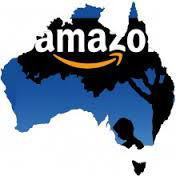
(blogs.metaplume.com)
Otherwise, it’s gone a bit quiet this end with distractions such as writing another book, tentatively titled The Unlikely Adventures of Claudia Faraday, organising theatre tours for January and getting ready for my Preparing for Publication workshops for self published writers at the Free Word Centre here in London, in association with that great institution, The Literary Consultancy. (For details click here.)
Also, following a successful application for a grant from the Royal Australian Historical Society - for which huge thanks, RAHS – I have also applied for a Fellowship from the State Library of New South Wales to write the sequel to Worst Country, about that great pioneer farmer and stock and station agent, GM Pitt, Mary’s grandson and my great great grandfather. Cross fingers.
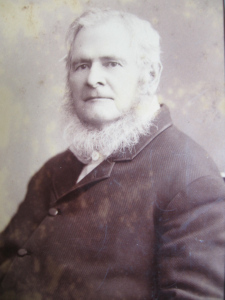
George Matcham Pitt, who I am hoping to get to know better


October 16, 2013
Remarkable Australian women
It’s Australia season in London right now. First of all was a festival of Australian films at the BFI on the South Bank, then a massive exhibition of Australian paintings at the Royal Academy in Piccadilly – the biggest ever outside Australia, I believe – followed by a series on BBC4 (television) called The Art of Australia, and now, courtesy of the London Film Festival, screenings of a film called Tracks, directed by John Curran and starring Mia Wasikowska, based on the true story of a young woman called Robyn Davidson who in the ’70s walked nearly 2,000 miles from Alice Springs to the west coast of WA with four camels, a dog, a compass and no radio.
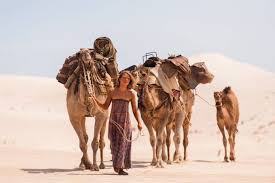
Mia Wasikowska as Robyn Davidson (standard.co.uk)
Australia has always been renowned for its RAW (how I hate acronyms). In the earliest days it was often the women who kept things going while their husbands were, in the case of John Macarthur for instance, exiled back to the old country for wrongdoings. There was my great times four grandmother Mary Pitt, who emigrated to New South Wales as a widow in her fifties, with her five children, as early as 1801 – when, frankly, people could not be bribed into going there.
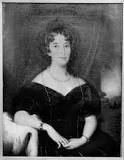
Elizabeth Macarthur (wikipedia)
Now there is Robyn Davidson, who trekked across the Australian desert on her own, aged twenty-something; and when asked Why? responded Why not?
The film, which I saw last night, is amazing in one sense but not quite amazing enough. I think you have to understand a bit about RAW to understand why a twenty-something, extremely attractive (ie possibly not short of a friend) woman would want to do such a thing, even if she does prefer the company of animals to people. I could think of a few reasons Why not? and I think I was hoping by the end of the film to understand why she said why not; in other words I could have lived in her skin a bit more and been left with a better insight into the unique extraordinariness of the Australian desert and what might happen to a person who crossed it, alone, and survived, with nobody but irritating tourists and journalists interrupting her. The nearest the film came to such an insight was in Davidson’s interactions with the aboriginal people and in particular with the elderly (and hilarious) Mr Eddie, who was happy to accompany her part of the way through sacred country a woman was not allowed to enter on her own, wearing one shoe and one slipper. But what I’m really trying to say is whatever you make of the film, it – and its subject matter – could be nothing other than Australian.
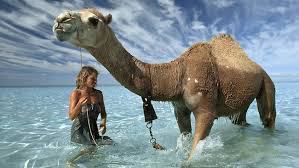
Robyn Davidson (theaustralian.com.au)
The RA exhibition is almost overwhelming, but for a non visual person like myself it was fascinating to see how depictions of the great south land evolved from the early European lookalikes to what became known later as Australian Impressionism – Arthur Streeten and Tom Roberts in particular. On the BBC4 programme, which I would have liked to have seen before the RA exhibition, presenter Edmund Capon – once director of the Gallery of NSW (and a Pom) – explains this evolution with great clarity. It echoes my own much smaller (and more recent) impressions of an Australia that is now so far removed from its mother country in every way – and I’m not just talking geographically – it is almost unrecognisable.

Royal Academy exhibition (royalacademy.org.uk)
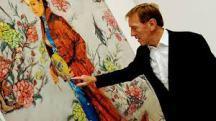
Edmund Capon (bbc.co.uk)
One way or another however Londoners are being given a distinct taste of Australian culture and history that has nothing to do with Neighbours or Home and Away. And I am beginning to feel slightly homesick for my second home. Hopefully I will be there again in the nearish future, thanks to a grant from the Royal Australian Historical Society toward the writing of the sequel to The Worst Country in the World, working title The Life and Times of George Matcham Pitt.

My great great grandfather
Watch this space.


August 31, 2013
Another book
If you’d told me a year ago I’d be publishing a book on self publishing I’d have given you a very odd look.
Why would a woman with very average computer skills, who spends the majority of her daylight hours staring at her machine but not necessarily with much love, affection and above all UNDERSTANDING want to enter the nerd world?
Like others of my generation I was invented before computers so when they entered my life I improvised my way around them, struggling and swearing as I went and no doubt developing appalling habits, with absolutely no instruction at all, not from school or college, or books, or even from some bright young colleague in an office.
So it took me a good deal of time to convince myself that I could convert a manuscript into both a professional-looking ebook and a half-decently attractive paperback, all on my own. It took me much longer than it needed to, partly because I am not good at following written instructions (page two of the washing machine instructions and I’m losing the will to live) but partly because out of all the dozens of books and blogs I read I couldn’t find one that spelled out the process clearly, simply, comprehensively, in as few words as possible and – most importantly – that worked.
So I’ve spent the past few months cobbling together what I hope is a clear, comprehensive and SHORT instruction book that guides the non techie writer through the maze of ebook conversion and print production. It’s written as a companion guide to the workshops I have planned for later this year in association with The Literary Consultancy. (For details of the workshops please click here.)
It’s available on Amazon.co.uk and Amazon.com. Joyous reading (and converting)!
(Next year, quantum theory.)




